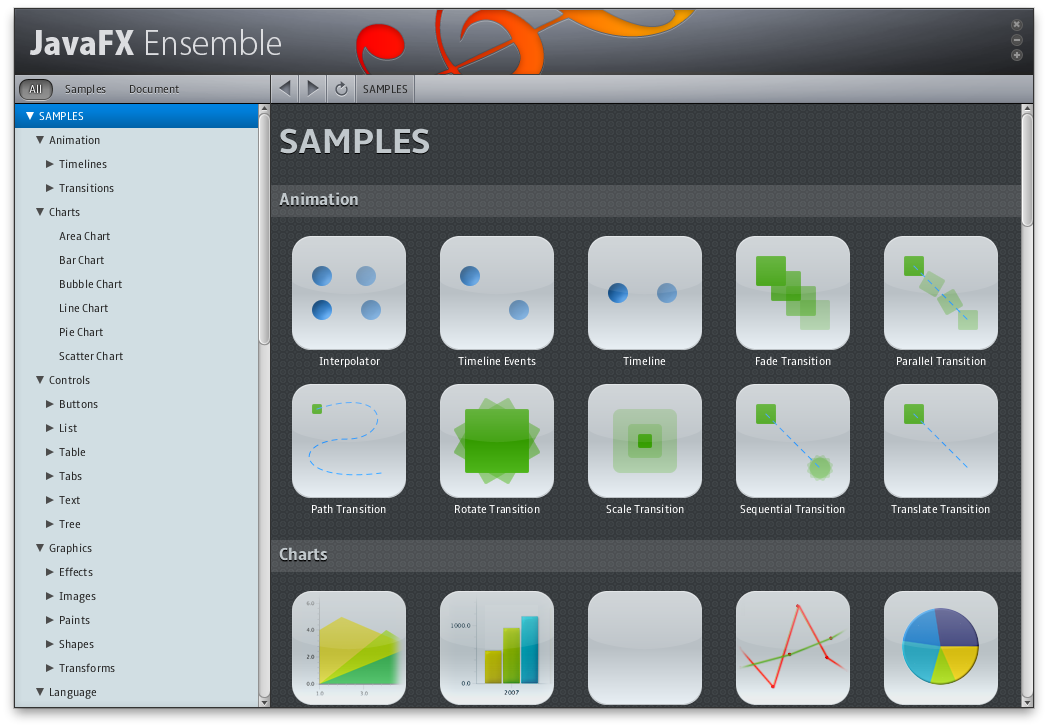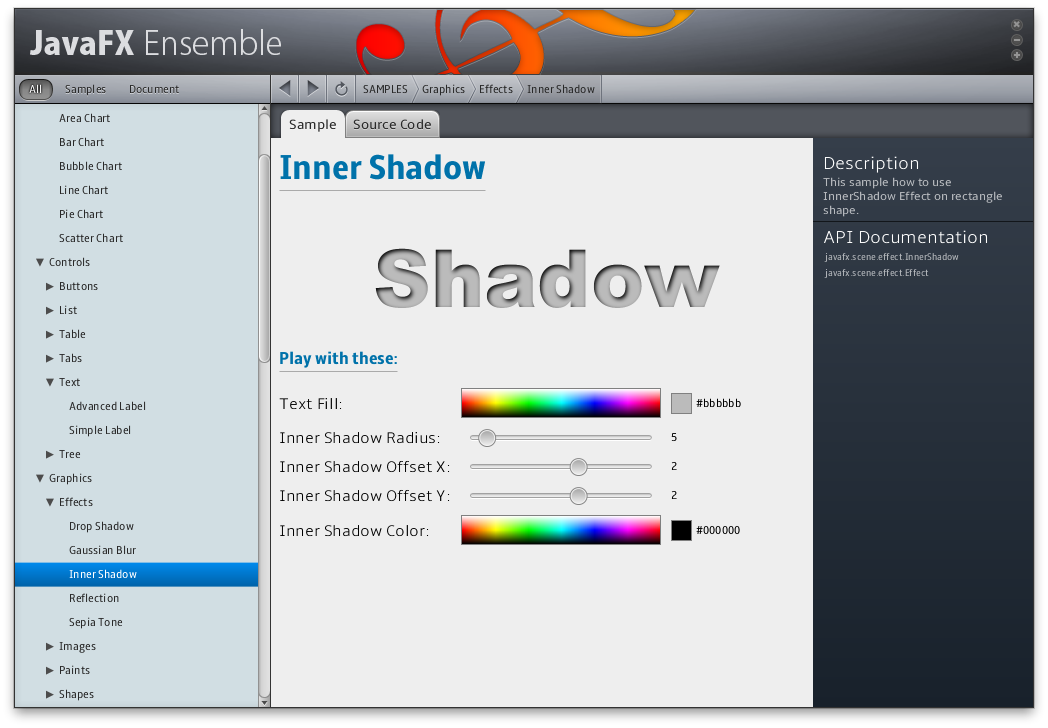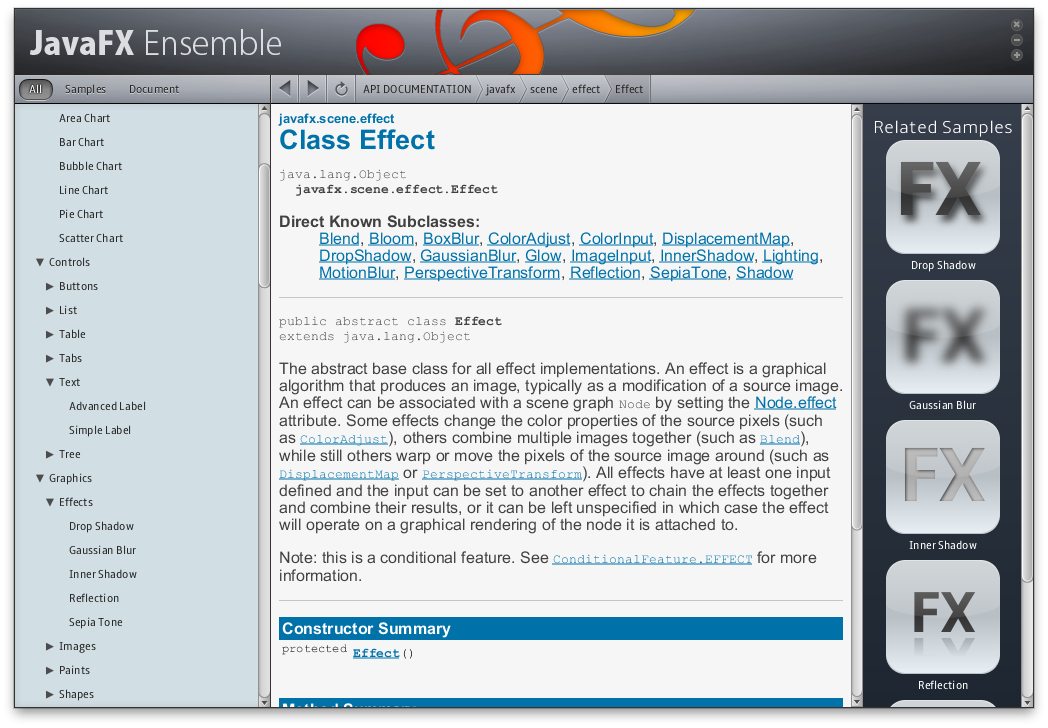FX Experience Has Gone Read-Only
I've been maintaining FX Experience for a really long time now, and I love hearing from people who enjoy my weekly links roundup. One thing I've noticed recently is that maintaining two sites (FX Experience and JonathanGiles.net) takes more time than ideal, and splits the audience up. Therefore, FX Experience will become read-only for new blog posts, but weekly posts will continue to be published on JonathanGiles.net. If you follow @FXExperience on Twitter, I suggest you also follow @JonathanGiles. This is not the end - just a consolidation of my online presence to make my life a little easier!
tl;dr: Follow me on Twitter and check for the latest news on JonathanGiles.net.
by Richard Bair | May 27, 2011 | General
For months and months we’ve been focused solely on the mechanics of building a platform — API design, writing tests, fixing bugs, use cases, features, documentation etc — and with the release of the beta the #1 question on everyone’s mind is, “Is JavaFX 2.0 cross platform?!”. That the beta is initially a windows-only beta has apparently stirred up a fair amount of concern. Shockingly, some people have even asked whether we ever intend to be cross platform. I can say definitively “Yes, of course!”. It would be quite illogical for any platform released by the Java team to not be cross platform. And even more so for the Java team to release a platform which had no intention of being cross platform while also purporting that the said platform was to be the next generation Java rich client platform.
We absolutely will be targeting a whole host of different platforms, not even just the big three (Mac, Linux, Windows). The value of the Java platform is in the fact that you can write across multiple operating systems and devices.
Now, somewhat like Apple, Oracle doesn’t tend to make premature announcements. I cannot at this time comment on when support for different platforms will be available, but hope to comment when such announcements have been made through the official channels. I know that this form of communication strategy leaves people to their own imagination which, as often as not, seems to be rather pessimistic in nature :-). So, to help provide some guidance here, I’d just like to say:
JavaFX will be cross platform.

by Richard Jasper and Jonathan | May 26, 2011 | General, News
Great news today, the public Beta for JavaFX 2.0 has been released! The beta includes a handful of samples, including Ensemble which is the sampler for JavaFX and will be beefed up over time to include tips and tricks and other such things. There is also javadoc (though, beware, there are still JavaFX Script examples. The docs for new code is better than old code). If you find bugs, submit them to the JavaFX JIRA bug tracker.
There is a lot of great stuff in this release, including binding, observable collections, sortable and filterable observable lists, many more UI controls, enhanced animation support including for game loops (AnimationTimer), properties (observable!), and more. There are a few things we’re still adding (including some important things!), but for the most part, the features are all there and functional, so go try them out! Please do file bugs, write blogs, and let us know what you think of the APIs. Things are definitely more verbose in Java than they were in JavaFX Script, though in large part this will be solved with lambda’s in Java 8.
Especially, if you have use cases that our APIs prohibit (as opposed to API we just need to add) please please please! file these in JIRA! The reason we’ve released the beta is to get exactly this kind of feedback. API is forever, so all the feedback you have on the API please file, and the sooner the better!
Ensemble



by Jonathan Giles | Apr 10, 2011 | Links
Hey everyone – here’s another bunch of JavaFX links that you might find interesting. Sorry for not posting these recently – I try to batch up the links I’m collecting on my personal website, and post them here once there is a decent number of links. I’m sure as JavaFX 2.0 hits beta and GA we’re bound to see more posts here however.
- Richard Bair is presenting a ‘Richard Bair Reveals All on JavaFX 2.0‘ talk this week. Note: the location has changed since the initial announcement – it is now at the Googleplex rather than at Oracle HQ. As always, there is a livestream available on ustream, where you can chat with other participants, as well as provide questions via a Google Moderator link. I’ll be in the online chat, so I hope to catch many of you in there too!
- Eric Bruno has blogged about creating a custom control in JavaFX 2.0. Given this is my day job, I should note a few things: 1) this is pre-beta API, 2) I haven’t actually reviewed in detail how accurate this code sample is (and whether it is using best practices), and 3) I’ve challenged Eric to attempt doing the same with just CSS – which in this example should be far simpler.
- I did a short teaser video of something I was working on recently – sorting / filtering in ListView and TableView controls. It’s still very primitive, but the primary purpose of the video is to actually show how simple it is to link up this functionality in JavaFX 2.0.
- Tom Eugelink has been developing using JavaFX 2.0 EA and has provided his feedback on the current API (which is very much in a state of flux still!).
- Max Katz blogged about JavaFX 2.0, and how recently there was discussion about initially supported platforms. I don’t really have anything to add from the product marketing side of things (it’s absolutely not my area at all, I am not a spokesperson for JavaFX 2.0, I have no insight at all into this level of things, etc, etc, etc), but I did want to say this: Within Oracle a number of the JavaFX development team are developing JavaFX 2.0 on Mac and Linux platforms. There are also a number of people in the JavaFX 2.0 EA program using Mac OS and Linux as their development environments (e.g. Dean’s post from early February). Regardless of what is officially supported in the 2.0 release, as a bunch of hardworking engineers we’re working to ensure all platforms work as well as possible. Regarding the comments on Max’s blog, I think there is a bit too much assuming going on! I’m certain more information will come out from official sources as we build up to the JavaFX 2.0 release. However, and as always, once the beta hits we’d all appreciate your feedback in the JavaFX bug tracker.
- Re Lai has blogged about ‘Using Adobe Flex and JavaFX with JavaServer Faces 2.0‘. Note: this is a JavaFX 1.3-related post.
- mxshrestha has blogged about managing multiple scenes in JavaFX Script.
Hope you found something interesting! 🙂 Catch you again soon.
by Jonathan Giles | Mar 20, 2011 | Links
Here we go again, with another batch of JavaFX 2.0 related links of the week. I hope you enjoy them 🙂
Thanks to everyone who takes the time to blog about their thoughts, experiences, and progress with JavaFX 2.0. I love reading it and love sharing it with the community – keep up the great work!
by Jonathan Giles | Mar 6, 2011 | Links
It’s March already?! It seems time is flying past these days, yet there is never enough time in the day to get everything done. For those of you too busy to scour the web for Java desktop links then, I hope I can be of some help! 🙂 This week we have some blog posts on what people are finding out about JavaFX 2.0. As always, feel free to email me any links you may have!
- Alan O’Leary blogged about the WebView component in JavaFX 2.0 EA, and integrating it within a Swing application. This has long been a request of developers in the Swing world – and so this may be a viable option for many projects.
- Following up on this, Aljoscha Rittner blogged about integrating JavaFX 2.0 EA with the NetBeans Platform to get the best of both worlds. His example embeds the WebView inside a NetBeans-based application. I wish I’d see someone take the time to create a fully JavaFX-based application framework 🙂
- Steven Herod, author of the TwitterFX application, has blogged about his first impressions of JavaFX 2.0 EA. He has spent the last few weeks working on a new JavaFX 2.0-based TwitterFX client, and seems impressed by what is coming in JavaFX 2.0.
- I picked up on an example Adam Bien gave of TableView, slightly tweaking it to show an alternative means of populating the cells of the TableView.
That’s us for another week!
by Jonathan Giles | Feb 27, 2011 | Links
Howdy folks to another week of links. It certainly seems like the number of links this week has picked up, which is great to see. Let’s get right into things.
- Adam Bien had a very popular blog post about JavaFX 2.0, showing off how you build a very simple Hello World application using the early JavaFX 2.0 API. Also interesting is the considerable discussion that took place in the comments section.
- Adam Bien continues posting about JavaFX 2.0, this time doing a quick post about how a TableView control can be created and populated. On my behalf, your feedback on this is very much appreciated (even though the API shown by Adam is a little out of date now).
- Peter Pilgrim has recorded three screencasts as he plays with and explores the new JavaFX 2.0 SDK. Just note that what he is showing is pre-beta code samples using APIs that may change, and of course no best practices have been developed yet, so continue to explore with alternate approaches! 🙂
- Stephen Chin was interviewed by OTN, where he discusses JavaOne, JavaFX, Visage and other topics.
- Stephen Chin is currently in India on business, and he gave the ‘JavaFX 2.0 and Alternate Languages‘ talk he and I first gave at JavaOne. Each time he gives it it’s a little bit different though, so it pays to check it out if you’re interested.
- The JavaFX 2.0 roadmap has been updated to reflect the current state of progress. In general it appears as if the JavaFX team are doing a great job, keeping up with the schedule (which has always been a very tight schedule!).
Catch you all in a weeks time!
by Jonathan Giles | Feb 13, 2011 | Links
Sorry folks for things being so quiet around here recently. Behind the scenes the JavaFX team has been super, super busy cranking out JavaFX 2.0, and well, that takes a lot of time to ensure the quality and functionality is top notch. I hope to get this blog back to life over the coming months as more and more JavaFX 2.0 news begins to surface. We’ve definitely got a lot to talk about….but not quite yet 🙂
So, let’s get into the links!
JavaFX 2.0
- Richard Bair, Java Client Architect and blogger on this blog, was interviewed by Java Spotlight. He provides a lot of insight into JavaFX 2.0, both where it is now and where we are taking it in the coming months before the final release.
- Dean Iverson has blogged about using the JavaFX 2.0 early access release with Groovy/Griffon. He has even uploaded a YouTube video showing a brief glimpse of what he created. It isn’t much, but it’s exciting to hear of people using JavaFX productively in various JVM-based languages.
- Adam Bien blogged about JavaFX 2.0, in particular a smoke test around the installation, docs and launch experience. His thoughts are all very positive, which is great considering the early stage that JavaFX 2.0 is in.
- Finally, Eric Bruno has also announced that he has JavaFX 2.0 EA, and is very impressed by it. There isn’t much more content to this post, but he promises to continue blogging about his thoughts and findings as the weeks go on.
JavaFX 1.x
That’s us for another week – and once again apologies since the last post – I’ll try not to do that again any time soon! Keep up all the hard work folks, and I’ll catch you all soon. 🙂
by Richard Bair | Nov 12, 2010 | News
As you’ve probably already heard, a big announcement came out today from Apple and Oracle announcing that Apple is contributing to the OpenJDK! This is great news for us as IBM and now Apple have joined with Oracle on a single implementation of Java. Those who have been in the Java landscape for a while know what a big deal this is (and has been a dream of mine since I first came to Sun). I think the agreement really clarifies a few things:
Apple also confirmed that Java SE 6 will continue to be available from Apple for Mac OS X Snow Leopard® and the upcoming release of Mac OS X Lion. Java SE 7 and future versions of Java for Mac OS X will be available from Oracle.
Anyway, I hope to blog some more in the future about what our plans are around this and how it will be going forward. I’m fairly giddy about it, a bit like getting christmas early. Hooray!
Edit:
The news already made it to ArsTechnica: http://arstechnica.com/apple/news/2010/11/apples-openjdk-project-to-bring-java-se-7-to-the-mac.ars
And Information Week http://www.informationweek.com/news/software/open_source/showArticle.jhtml?articleID=228200849&subSection=News
by Jonathan Giles | Nov 7, 2010 | Links
Here we go again with another week of JavaFX links. Let’s get into the links.
- As I’ve mentioned previously, Stephen Chin is presenting ‘JavaFX 2.0 With Alternative Languages and Visage‘ at the Silicon Valley JavaFX Users Group on November 10. This will be streamed live if you can’t be there in person. You can create an account at ustream (if you want to take part in the chat) and catch the action live at 7pm Pacific time (also, just note that the US left daylight savings time this weekend, so adjust your calculations as appropriate).
- At the Java Posse Roundup earlier this year (before the JavaFX 1.3 release) there was a session on JavaFX. You can listen to this, or just read the summary by Peter Pilgrim.
- A new JavaFX book has just come out which is written by two ex-Sun employees – Lawrence PremKumar and Praveen Mohan. It is titled ‘Beginning JavaFX‘, and is published by APress. Looking at the summary, it looks a little confused – mentioning JavaFX 2.0 but I’m sure that is a typo, going by the Google preview of the book (available from the previous link).
That’s that for another week. Catch you all in a weeks time with another round of JavaFX links.
by Jonathan Giles | Oct 31, 2010 | Links
A relatively quiet week this week in the JavaFX world, which is understandable given that JavaFX 2.0 is in the works (and let me tell you, it’s starting to look good!). This week we have the following two posts of interest to the community:
- William Billingsley blogs about the perils of calling
this.getClass() in JavaFX Script. My apologies to William for missing his blog last week, despite him emailing the link to me!
- Coming up on November 10 is Stephen Chin’s talk about JavaFX 2.0 with alternative languages. This is an extended talk based on the presentation he and I gave at JavaOne. His talk also will be covering the visage project. Don’t worry – I’ll remind you of this talk next week also.
That’s it for this week – I told you it was a quick post! 🙂
As always, feel free to drop me an email with links you think I should cover in a future post.





